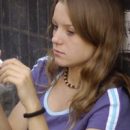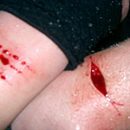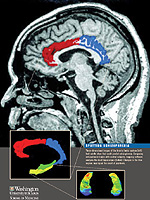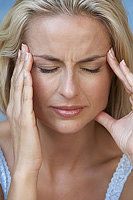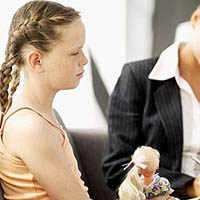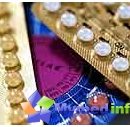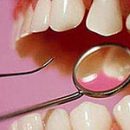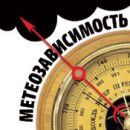One of the important studies for the diagnosis of narcolepsy is a multiple latency test to sleep (MTLS). It is held in specialized centers involved in the study of sleep disorders (Somnological Centers). Read more about Test in the article.
Content
Multiple latency test to sleep (MTLS) - a study of episodes (attempts) of daily sleep, is used to evaluate how quickly you can fall asleep in a relaxed atmosphere during the day. MTLS is a standard way to measure your daylight level. Excess daytime drowsiness is a state when you are cloneing to sleep at the time and in the place when you have to wake up and be in good functional state. Approximately 5% of the adult population suffers from excess drone. This is one of the main tests for the detection of narcolepsy.
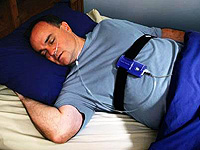 The basis of this study is the idea that as the level of drowsiness increases, the time is reduced during which you can fall asleep. During MTLS, the electrical signals of the brain are recorded, eye movements are recorded, the muscle tone on the chin, the heart rhythm. The study allows you to establish how quickly after falling asleep you have a rapid sleep phase and how many rapid sleep episodes are registered during the study.
The basis of this study is the idea that as the level of drowsiness increases, the time is reduced during which you can fall asleep. During MTLS, the electrical signals of the brain are recorded, eye movements are recorded, the muscle tone on the chin, the heart rhythm. The study allows you to establish how quickly after falling asleep you have a rapid sleep phase and how many rapid sleep episodes are registered during the study.
During the test, you will be isolated from the impact of various external factors that can affect your ability to fall asleep such as temperature (too hot or cold), illumination, noise, physical activity.
In 2 weeks before conducting the test, you will need to stop the reception of certain drug-psychostimulators drugs. Specialist-dynamologist will help you correctly plan the routine of medication.
One MTLS test is not enough to form a diagnosis of narcolepsy or other sleep disturbance. Its results can differ significantly from various people. But in combination with other methods of the survey, the results will be quite reliable.
Before holding the MTLC test, you may be asked to undergo a study on the detection of drugs. This is usually happening in the morning before holding MTLS. Research will help show that the test results are accurate. Filling a sleep diary for at least one week before testing may be extremely useful and will allow the doctor to determine your normal sleep and wake mode. 30 minutes before each of the daily sleep episodes is not allowed to smoke.
During the study, you will not be able to drink any drinks containing caffeine. You can also be on bright sunlight. The influence of external factors capable of affecting your dream will, if possible, minimized. In the room where the study is carried out, it will be dark enough and quiet. The temperature will be installed on a comfortable level for you.
The study of day sleep episodes is held immediately after the study of night sleep. In order for the MTLS results to be accurate, the total sleep time during the night study should be at least 6 hours.
The test consists of five sleep attempts with two-hour breaks between them. Sometimes a shortened test version consisting of 4 sleep attempts. An option consisting of 5 sleep attempts is more reliable when detecting narcolepsy. The first episode of sleep recording is carried out after 1.5 - 3 hours after your awakening after the study of night sleep. You will be offered a light breakfast no later than 1 hour before the test.
Sensors that transmit small electrical signals to the scalp and face will be attached to the hair. These signals make it possible to determine when you sleep or awake during dough. Brain Wave Sensors and Eyes Show, Code You will have a sleep phase with fast eye movements. During this stage of sleep, your eyes make rapid movements, and the activity of brainwaves is increased.
During the study, you will not experience any pain. Sensors will be neatly fixed on the skin and wires will be connected to the computer. Wires are long enough, so you can turn freely and move in bed.
Before studying, you will be asked to perform certain actions - to move the eyes, squeeze your teeth, turn your head. This will confirm that all sensors work correctly. The camcorder operating at a low level of lighting will allow the sleep laboratory to see you in the next room.
During each of their episodes of recording sleep, you will be asked to calmly lie in bed and try to fall asleep. After that, the light in the room will be turned off. After turning off the light, the time will be measured during which you will have a dream. Recording physiological signals will continue during sleep.
After you ship 15 minutes, you will go away. Each of the sleep episodes will be completed after 20 minutes, if you fail to sleep. Between the episodes of writing sleep, you will not be in bed, and you can do something in order not to fall asleep. After the second (midday) episode of the sleep recording you will be offered a lightweight breakfast.
After the last episode of registration of sleep parameters, checking the operation of the sensors will again be checked, after which the sensors will be removed. The study will be completed and you can go home.
Technologist polysomnography first browsing the test results. At the beginning, he or she will mark the time of sleep and wakefulness and sleep stages. Special attention will be paid to identifying and counting the number of episodes when you have a sleep phase with fast eye movements. After that, the results of the study will be transferred to your doctor. MTLS is not a test that you can «stamp». The doctor simply review the results of the study in order to establish which problems with sleep you have.

